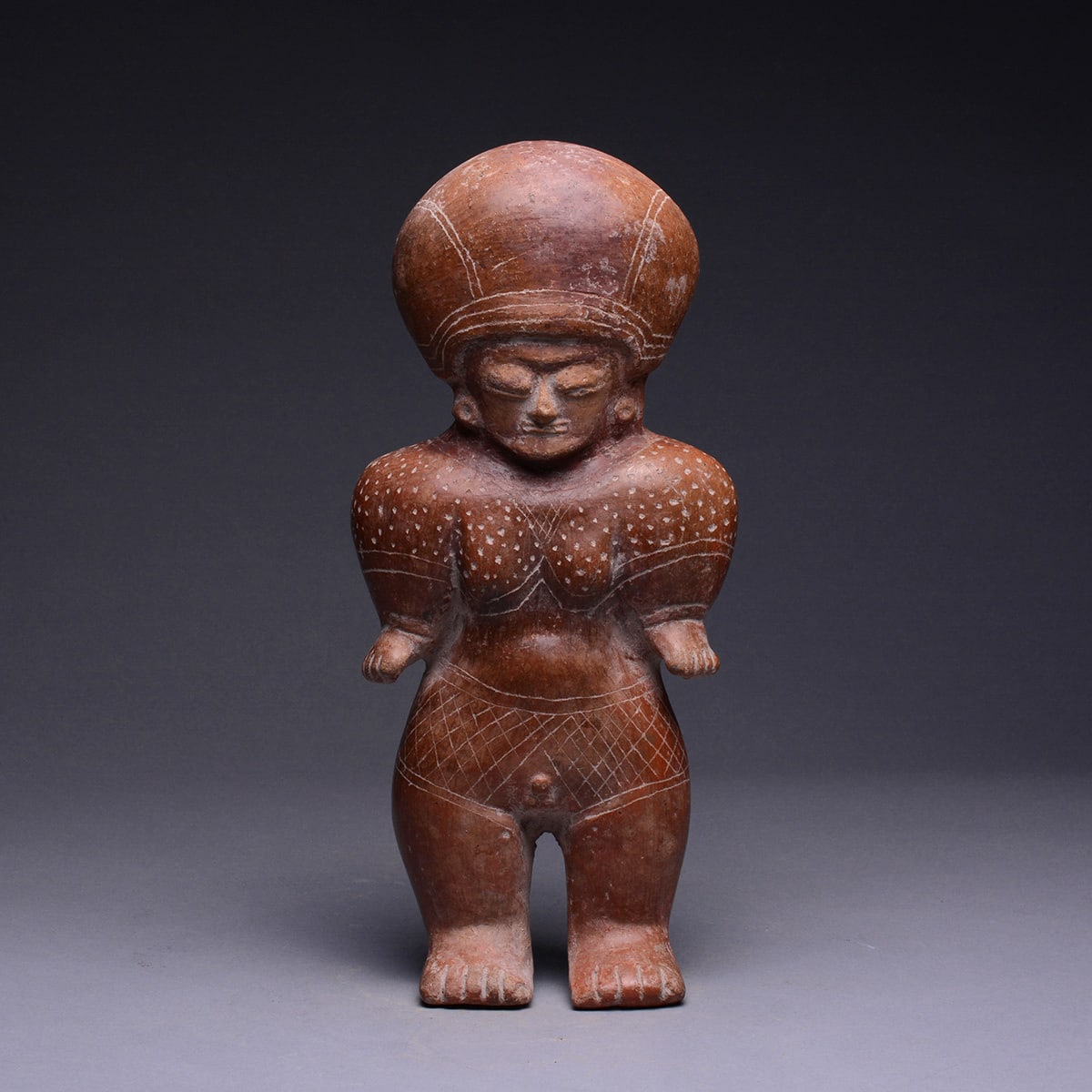Chorrera Terracotta Sculpture of a Standing Woman, 1100 BCE - 300 CE
Terracotta
14 x 33 cm
5 1/2 x 13 in
5 1/2 x 13 in
PF.2398
Further images
The Pre-Columbian cultures of Ecuador are among the oldest in South America and among the first to master the art of pottery. Although we know little about the peoples themselves...
The Pre-Columbian cultures of Ecuador are among the oldest in South America and among the first to master the art of pottery. Although we know little about the peoples themselves or their traditions, historians have been able to piece together a picture of life in Ancient Ecuador thanks in part to the art and artifacts left behind. The culture of Valdivia created some of the oldest known works of art in the Americas. Situated along the coastal strip of Ecuador, the Valdivians established a thriving society that flourished for around two thousand years (from approximately 4000 to 1500 B.C.). Today they are famed for their small fertility figures, believed to be the earliest representational works of art in the Americas, first carved from stone, later formed from terracotta.
Hundreds of years later after the Valdivians disappear from the archaeological record appears another culture to which the name Chorrera has been attached (lasting from circa 1100-300 B.C.). Little is known about this culture; however, it is significant for its widespread geographical reach. As such, their artistic style greatly influenced those diverse cultures that began to emerge in the final centuries of the Chorrera period, a time historians have labeled the Period of Regional Development.
This female figure from the Chorrera period (contemporary with the Chavin of Peru and the Tlatilco in Mexico) demonstrates the Ecuadorian craftsmen refined skill at manipulating the medium and his creative ability to express heightened spirituality and power. A standing female figure faces an aquiline nose and us with downcast coffee-bean eyes. Rounded ear ornaments and an incised collar with a triangular pendant frame her sculpted face. A flaring rounded headdress echoes the overall shape of her body, with its rounded shoulders and short, stocky legs. Artistically rendered incised and punctuated geometric motifs on her garments combine with the incised pattern on her headdress to give this striking figure a splendid sense of balance and harmony. Her finely burnished brown finish further evidences the skilled artistry that was at work to create this masterpiece of Ancient Ecuadorian art.
Hundreds of years later after the Valdivians disappear from the archaeological record appears another culture to which the name Chorrera has been attached (lasting from circa 1100-300 B.C.). Little is known about this culture; however, it is significant for its widespread geographical reach. As such, their artistic style greatly influenced those diverse cultures that began to emerge in the final centuries of the Chorrera period, a time historians have labeled the Period of Regional Development.
This female figure from the Chorrera period (contemporary with the Chavin of Peru and the Tlatilco in Mexico) demonstrates the Ecuadorian craftsmen refined skill at manipulating the medium and his creative ability to express heightened spirituality and power. A standing female figure faces an aquiline nose and us with downcast coffee-bean eyes. Rounded ear ornaments and an incised collar with a triangular pendant frame her sculpted face. A flaring rounded headdress echoes the overall shape of her body, with its rounded shoulders and short, stocky legs. Artistically rendered incised and punctuated geometric motifs on her garments combine with the incised pattern on her headdress to give this striking figure a splendid sense of balance and harmony. Her finely burnished brown finish further evidences the skilled artistry that was at work to create this masterpiece of Ancient Ecuadorian art.









